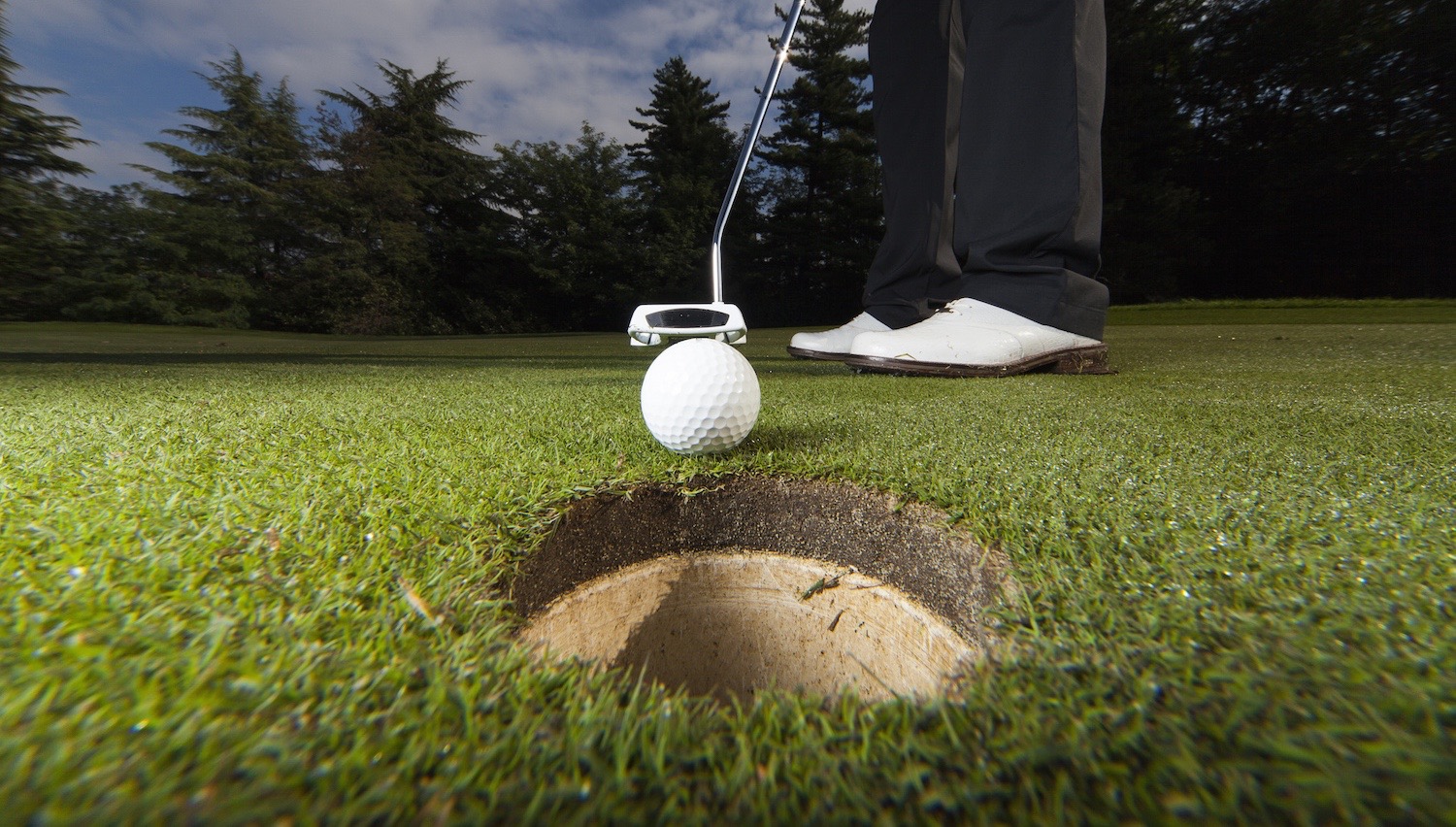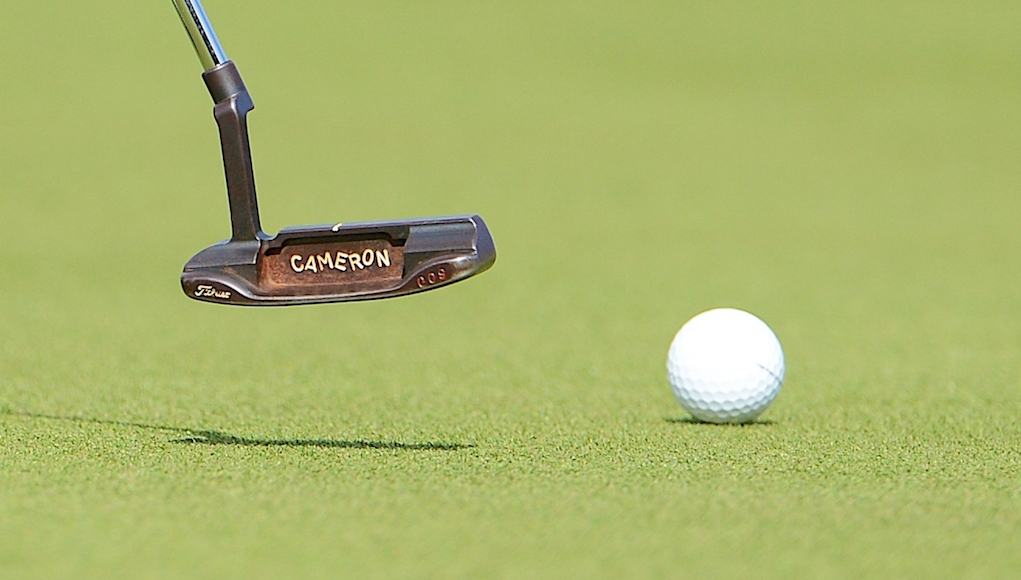Opinion & Analysis
Does the average golfer putt better or worse on FAST greens?

A few months ago, the GolfWRX Editorial Team emailed me three story ideas. The first two have worked out quite well (you can read them here and here), so I decided to dig into the third. Being somewhat of a grizzled veteran, I thought that I knew the answer to the above question… but could I prove it by researching the ShotByShot.com 160,000+ round database?
From the very beginning, 27 years ago, I have enabled ShotByShot users the flexibility to categorize their rounds by what I believe to be meaningful filters. Two of these filters are germane to this topic: Green Speed (fast, medium or slow) and Format (non-tournament vs. match play or stroke play tournament rounds). With considerable help from my genius programmer, we selected 17,000+ fairly recent rounds that represent the average 15-19 handicap golfer. We then sliced up the putting analysis according to the above green speed and format filters.
Let me try to anticipate and answer some obvious questions.
- Aren’t one man’s fast greens another’s medium or even slow? Absolutely! But as we have no way of knowing, I decided to ignore this variable and accept the indicated speed at face value.
- Do average golfers actually use these filters? Yes! The program has defaults for those who choose not to, but again, we can only evaluate the information provided.
The default for green speed is medium, and 71 percent of the selected rounds were medium. The default for format is non-tournament, which accounted for 84 percent of the rounds. These numbers made sense to me, as the average 15-19 handicap golfer tends to not participate in many tournaments, especially not stroke play where one must hole out on every hole.
The Answer?
It was what I expected, but nowhere near as dramatic. Putting was slightly better on slow- and medium-speed greens, and the putting on non-tournament greens were slightly better than tournaments.
- 1-Putt Percentages: These were within one percentage point across all categories, from a high of 18.9 precent on medium greens to a low of 18.1 percent of fast greens.
- 3-Putt Percentages were a bit more interesting. A low of 12.5 percent on medium greens vs. a high of 14.3 percent on fast greens. Again, not a great difference.
- Tournament vs. Non-tournament: Rounds recorded as stroke play also showed themselves to be more difficult, which makes sense.
What I found most interesting was the incidence of Four Putts. I used to say that the vast majority of golfers go through an entire career and never 4-putt. Why? They simply pick up after three putts. I was wrong when it comes to our ShotByShot.com subscribers, as they do record their 4-putts. I know that I generally 4-putt once a year. When it happens, I am never happy but always tell myself: “Look on the bright side, we got that out of the way and now won’t have to worry about it for the rest of the year.”
In a Putting Distance Control study of the 2015 PGA Tour, I learned that there were 88 four-putts and five 5-putts recorded by ShotLink last year. More than I would have guessed!
But here’s what I found interesting about our average golfer study; the incidence of 4-putts more than doubled from medium, non-tournament (one 4-putt every 20 rounds) to fast, stroke play rounds (one every nine rounds). This clearly demonstrates the added pressure of having to hole out when it counts.

How often do you 4-putt? Do you fall into the NEVER category, or one of the handicap ranges in the chart above?
In conclusion, fast greens (or at least greens golfers consider to be fast) are more difficult for the average golfer. They pose a greater challenge for distance control, leading to more 3- and 4-putts. That’s why before starting a round on an “away” course, I recommend golfers spend some time on the putting green to get a feel for the speed. I like to place tees 30 feet apart, and putt two balls back and forth until I have a great feel for my 30-foot stroke. As the vast majority of lag opportunities fall in the 20-40 foot range, you can measure most of yours lag putts as a slight variation of that 30-foot stroke. You will also avoid a big surprise if the greens are what you consider fast.
Opinion & Analysis
The 2 primary challenges golf equipment companies face

As the editor-in-chief of this website and an observer of the GolfWRX forums and other online golf equipment discourse for over a decade, I’m pretty well attuned to the grunts and grumbles of a significant portion of the golf equipment purchasing spectrum. And before you accuse me of lording above all in some digital ivory tower, I’d like to offer that I worked at golf courses (public and private) for years prior to picking up my pen, so I’m well-versed in the non-degenerate golf equipment consumers out there. I touched (green)grass (retail)!
Complaints about the ills of and related to the OEMs usually follow some version of: Product cycles are too short for real innovation, tour equipment isn’t the same as retail (which is largely not true, by the way), too much is invested in marketing and not enough in R&D, top staffer X hasn’t even put the new driver in play, so it’s obviously not superior to the previous generation, prices are too high, and on and on.
Without digging into the merits of any of these claims, which I believe are mostly red herrings, I’d like to bring into view of our rangefinder what I believe to be the two primary difficulties golf equipment companies face.
One: As Terry Koehler, back when he was the CEO of Ben Hogan, told me at the time of the Ft Worth irons launch, if you can’t regularly hit the golf ball in a coin-sized area in the middle of the face, there’s not a ton that iron technology can do for you. Now, this is less true now with respect to irons than when he said it, and is less and less true by degrees as the clubs get larger (utilities, fairways, hybrids, drivers), but there remains a great deal of golf equipment truth in that statement. Think about it — which is to say, in TL;DR fashion, get lessons from a qualified instructor who will teach you about the fundamentals of repeatable impact and how the golf swing works, not just offer band-aid fixes. If you can’t repeatably deliver the golf club to the golf ball in something resembling the manner it was designed for, how can you expect to be getting the most out of the club — put another way, the maximum value from your investment?
Similarly, game improvement equipment can only improve your game if you game it. In other words, get fit for the clubs you ought to be playing rather than filling the bag with the ones you wish you could hit or used to be able to hit. Of course, don’t do this if you don’t care about performance and just want to hit a forged blade while playing off an 18 handicap. That’s absolutely fine. There were plenty of members in clubs back in the day playing Hogan Apex or Mizuno MP-32 irons who had no business doing so from a ballstriking standpoint, but they enjoyed their look, feel, and complementary qualities to their Gatsby hats and cashmere sweaters. Do what brings you a measure of joy in this maddening game.
Now, the second issue. This is not a plea for non-conforming equipment; rather, it is a statement of fact. USGA/R&A limits on every facet of golf equipment are detrimental to golf equipment manufacturers. Sure, you know this, but do you think about it as it applies to almost every element of equipment? A 500cc driver would be inherently more forgiving than a 460cc, as one with a COR measurement in excess of 0.83. 50-inch shafts. Box grooves. And on and on.
Would fewer regulations be objectively bad for the game? Would this erode its soul? Fortunately, that’s beside the point of this exercise, which is merely to point out the facts. The fact, in this case, is that equipment restrictions and regulations are the slaughterbench of an abundance of innovation in the golf equipment space. Is this for the best? Well, now I’ve asked the question twice and might as well give a partial response, I guess my answer to that would be, “It depends on what type of golf you’re playing and who you’re playing it with.”
For my part, I don’t mind embarrassing myself with vintage blades and persimmons chasing after the quasi-spiritual elevation of a well-struck shot, but that’s just me. Plenty of folks don’t give a damn if their grooves are conforming. Plenty of folks think the folks in Liberty Corner ought to add a prison to the museum for such offences. And those are just a few of the considerations for the amateur game — which doesn’t get inside the gallery ropes of the pro game…
Different strokes in the game of golf, in my humble opinion.
Anyway, I believe equipment company engineers are genuinely trying to build better equipment year over year. The marketing departments are trying to find ways to make this equipment appeal to the broadest segment of the golf market possible. All of this against (1) the backdrop of — at least for now — firm product cycles. And golfers who, with their ~15 average handicap (men), for the most part, are not striping the golf ball like Tiger in his prime and seem to have less and less time year over year to practice and improve. (2) Regulations that massively restrict what they’re able to do…
That’s the landscape as I see it and the real headwinds for golf equipment companies. No doubt, there’s more I haven’t considered, but I think the previous is a better — and better faith — point of departure when formulating any serious commentary on the golf equipment world than some of the more cynical and conspiratorial takes I hear.
Agree? Disagree? Think I’m worthy of an Adam Hadwin-esque security guard tackle? Let me know in the comments.
@golfoncbs The infamous Adam Hadwin tackle ? #golf #fyp #canada #pgatour #adamhadwin ? Ghibli-style nostalgic waltz – MaSssuguMusic
Podcasts
Fore Love of Golf: Introducing a new club concept

Episode #16 brings us Cliff McKinney. Cliff is the founder of Old Charlie Golf Club, a new club, and concept, to be built in the Florida panhandle. The model is quite interesting and aims to make great, private golf more affordable. We hope you enjoy the show!
Opinion & Analysis
On Scottie Scheffler wondering ‘What’s the point of winning?’

Last week, I came across a reel from BBC Sport on Instagram featuring Scottie Scheffler speaking to the media ahead of The Open at Royal Portrush. In it, he shared that he often wonders what the point is of wanting to win tournaments so badly — especially when he knows, deep down, that it doesn’t lead to a truly fulfilling life.
View this post on Instagram
“Is it great to be able to win tournaments and to accomplish the things I have in the game of golf? Yeah, it brings tears to my eyes just to think about it because I’ve literally worked my entire life to be good at this sport,” Scheffler said. “To have that kind of sense of accomplishment, I think, is a pretty cool feeling. To get to live out your dreams is very special, but at the end of the day, I’m not out here to inspire the next generation of golfers. I’m not out here to inspire someone to be the best player in the world, because what’s the point?”
Ironically — or perhaps perfectly — he went on to win the claret jug.
That question — what’s the point of winning? — cuts straight to the heart of the human journey.
As someone who’s spent over two decades in the trenches of professional golf, and in deep study of the mental, emotional, and spiritual dimensions of the game, I see Scottie’s inner conflict as a sign of soul evolution in motion.
I came to golf late. I wasn’t a junior standout or college All-American. At 27, I left a steady corporate job to see if I could be on the PGA Tour starting as a 14-handicap, average-length hitter. Over the years, my journey has been defined less by trophies and more by the relentless effort to navigate the deeply inequitable and gated system of professional golf — an effort that ultimately turned inward and helped me evolve as both a golfer and a person.
One perspective that helped me make sense of this inner dissonance around competition and our culture’s tendency to overvalue winning is the idea of soul evolution.
The University of Virginia’s Division of Perceptual Studies has done extensive research on reincarnation, and Netflix’s Surviving Death (Episode 6) explores the topic, too. Whether you take it literally or metaphorically, the idea that we’re on a long arc of growth — from beginner to sage elder — offers a profound perspective.
If you accept the premise literally, then terms like “young soul” and “old soul” start to hold meaning. However, even if we set the word “soul” aside, it’s easy to see that different levels of life experience produce different worldviews.
Newer souls — or people in earlier stages of their development — may be curious and kind but still lack discernment or depth. There is a naivety, and they don’t yet question as deeply, tending to see things in black and white, partly because certainty feels safer than confronting the unknown.
As we gain more experience, we begin to experiment. We test limits. We chase extreme external goals — sometimes at the expense of health, relationships, or inner peace — still operating from hunger, ambition, and the fragility of the ego.
It’s a necessary stage, but often a turbulent and unfulfilling one.
David Duval fell off the map after reaching World No. 1. Bubba Watson had his own “Is this it?” moment with his caddie, Ted Scott, after winning the Masters.
In Aaron Rodgers: Enigma, reflecting on his 2011 Super Bowl win, Rodgers said:
“Now I’ve accomplished the only thing that I really, really wanted to do in my life. Now what? I was like, ‘Did I aim at the wrong thing? Did I spend too much time thinking about stuff that ultimately doesn’t give you true happiness?’”
Jim Carrey once said, “I think everybody should get rich and famous and do everything they ever dreamed of so they can see that it’s not the answer.”
Eventually, though, something shifts.
We begin to see in shades of gray. Winning, dominating, accumulating—these pursuits lose their shine. The rewards feel more fleeting. Living in a constant state of fight-or-flight makes us feel alive, yes, but not happy and joyful.
Compassion begins to replace ambition. Love, presence, and gratitude become more fulfilling than status, profits, or trophies. We crave balance over burnout. Collaboration over competition. Meaning over metrics.
Interestingly, if we zoom out, we can apply this same model to nations and cultures. Countries, like people, have a collective “soul stage” made up of the individuals within them.
Take the United States, for example. I’d place it as a mid-level soul: highly competitive and deeply driven, but still learning emotional maturity. Still uncomfortable with nuance. Still believing that more is always better. Despite its global wins, the U.S. currently ranks just 23rd in happiness (as of 2025). You might liken it to a gifted teenager—bold, eager, and ambitious, but angsty and still figuring out how to live well and in balance. As much as a parent wants to protect their child, sometimes the child has to make their own mistakes to truly grow.
So when Scottie Scheffler wonders what the point of winning is, I don’t see someone losing strength.
I see someone evolving.
He’s beginning to look beyond the leaderboard. Beyond metrics of success that carry a lower vibration. And yet, in a poetic twist, Scheffler did go on to win The Open. But that only reinforces the point: even at the pinnacle, the question remains. And if more of us in the golf and sports world — and in U.S. culture at large — started asking similar questions, we might discover that the more meaningful trophy isn’t about accumulating or beating others at all costs.
It’s about awakening and evolving to something more than winning could ever promise.





















Grizz01
Aug 3, 2016 at 8:24 pm
Totally missed the most important factor. Which made all this null and void. The conditions of the greens. The author is concluding that slow, medium and fast greens are all in tournament shape. Smooth rolling and such. I’ve played some high end courses after playing my muni. I always putt better on the high end course and they are much faster. The roll way better and I can read them better.
Andrew Todd Yocum
Aug 3, 2016 at 10:57 pm
I agree with this Grizz01. Feel the exact same way.
Christian
Aug 4, 2016 at 4:04 am
This is true. It’s very rare for hairy greens to be uniformly hairy. To add, I always putt better on fast greens, sliw greens makes my stroke more forced/less smooth.
Rev G
Aug 3, 2016 at 7:27 am
This is assuming that the non-speed factors of the greens are the same, which I wouldn’t think they would be. The courses that can afford to keep greens up at faster speeds are usually those with greens that have had more difficulty put in them by the “big name” architect they had design their course. Typically courses with slower greens are the smaller budget courses that had less extensive shaping of the greens. To me greens with slope, tiers, level changes and saddles are the ones that are tough to putt -regardless of speed – but because of the expense, courses that have those feature also typically are faster.
ooffa
Aug 3, 2016 at 7:27 am
I put better on temporary greens during the winter.
SirShives
Aug 2, 2016 at 2:02 pm
Prior to this summer, I can only remember having one 4 putt in 15 or so years of playing golf. (I’m not saying I’ve only ever had one 4 putt, just that I can only remember that one.) Earlier this summer, I recorded 2 in one round playing at a course with crazy fast greens. To be fair, the starter warned us the greens were going to be that way. This course had recently replaced their greens and they were dealing with a combination of maturing grass and a very hot, dry start to the summer. It’s brutal to have your buddies ask you “How’d you shoot?” and sum up your round with “I had 2 FOUR PUTTS!!” ????????????
Justin
Aug 2, 2016 at 1:45 pm
As a low handicapper, I will almost always putt better on greens that are faster AND roll true. I believe the simple reason behind this is the less you have to take the putter head back, the less chance you have of altering your stroke. A 30 foot flat putt on greens that stimp out around 8 or 9 requires a significant hit to get the ball to the hole. Put that same put on a green that rolls to a 12 and you need significantly less force behind the ball to get it there. Less force causes less “skidding” after impact and gets the ball rolling on line faster.
That being said, what I have noticed is that the courses that have greens which run a little bit faster also tend to be tougher overall. They’ll have at least a few greens with multiple tiers and tend to have more undulation overall. So, after factoring that into the equation, I think that the “slope” of the greens and what a golfer is used to playing on factor much more into success or failure than the actual speed of the greens. In fact, it would be nice if each course slope rating was divided into two groups: Through the green and on the green. The combination of those would give you your total slope. Take 2 courses with an overall slope of 130 and figure out that 1 of them has greens that rate out at a slope of 75 and the other only 60. Invariably you find that one will be harder on the greens and the other is more about ball placement off the tee and approach shots.
A lot of golfers rely on reviews on various websites when deciding what course to play on their destination vacations or a little outside their normal area. I feel that if slope (moreso than course rating because slope accounts for your handicap level) was used to measure both green difficulty along with the rest of the course, more golfers would choose to play courses based on their skill set. Everyone wants to have a good time out there and while some courses (Pebble, Sawgrass, Pinehurst, etc) will be played regardless of difficulty, most can make a more educated decision about where to spend their hard-earned money versus how well they “may” play. Lately I’ve struggled with the driver but have always been a very good putter and would likely choose a course with tough greens over one that had tough tee shots and approaches. Some may feel the exact opposite and would not look forward to a hellish day on the greens. My best scores ever have come on days where my putter was hot and if I actually tracked the stats I bet those days would also show up as the longest feet of putts made I’ve had all time. I’ve had incredible ball striking rounds where I’ve not broken par because I either wasn’t familiar with the greens or just had an off putting day. I’v ealso shot under par when I felt my swing was way off that particular day.
We always hear that putting is the key to improving your game, but I also think it’s the key to the enjoyment of the game. Not everyone can drive the ball over 300 yards and very few who can’t will ever build up enough strength or the proper fundamentals to do so. BUT, everyone has the opportunity to sink a 30+ foot putt, and the feeling that produces is so magical that you may just start to feel like a golfer after you had lost all hope 🙂
larrybud
Aug 2, 2016 at 11:46 am
c’mon now, we all know 1/2/3 putt percentages are MEANINGLESS! Unless you have a strokes gained chart, you can’t glean anything from these stats.
1 putt percentage may be more because players chip farther from the hole on faster greens (short sided chips are harder to get close on fast greens!).
3 jack percentage may be more because the first putt distance is greater on fast greens (ball rolls out more on fast greens, effectively making the green smaller!)
Peter Sanders
Aug 2, 2016 at 5:13 pm
Larrybud,
You are correct that Strokes Gained is the true measure of putting performance and I of course had it and used it. That said, it is just a number and I felt it more meaningful to describe the % 1-Putts, 3 and 4-Putts that make up the number.
Other Paul
Aug 2, 2016 at 11:33 am
Greens are usually super slow in the spring where i live. And then medium all summer. We got a ton of rain this year and no heat waves yet so the greens are healthy and short. Balls roll far right now. In the spring i averaged 1.9 putts per hole. And then i had a few rounds with hand full of 3 putts, now i am used to it again and my average is dropping back down to under 2 per hole.
Sm
Aug 2, 2016 at 9:59 am
It’s not just speed that matters when it comes to Average Joe’s courses.
It can’t just be fast.
It also has to be smooth. I bet even Average Joe’s stats would go up if the greens he played on more often than not were smooth.
BlakLanner
Aug 2, 2016 at 10:54 am
I agree completely. I am far from the greatest putter but I can adjust to the speed of greens within a hole or two if they are consistent and smooth. However, when I am on a course with inconsistent or bumpy greens (like the muni courses around here with the brutal weather we have had this summer), my putting greatly suffers since I cannot trust any feel from previous greens or even if the ball will follow a line without bouncing around in a few spots.
Shallowface
Aug 2, 2016 at 9:14 am
Regardless of green speed, one major factor in three putting is the fact that at so many courses the person setting the pins doesn’t follow the USGA’s suggestion that the area three feet around the cup be as level as possible. They’ll set them on the sides of slopes, on top of ridges, anywhere but where they should. It leads to what I call “McDonald’s Putts,” where you have a three footer that breaks a foot and the roll of the ball is in the shape of an arch. How often do see a three footer on TV played any further than the top edge of the hole? Not often. No wonder they make more than we do.
Obee
Aug 2, 2016 at 10:53 am
Totally true. For the most part, the tour plays “USGA-spec” greens, that have a maximum slope of ~2 – 2.5 degrees in the pinnable areas, which makes for boring putting. I much prefer slightly slower greens (9 – 10 on the stimp), but with MORE contour. Makes putting much more of a challenge.
Philip
Aug 2, 2016 at 11:33 am
What! There is a recommendation on this – I’m going to look it up and give it to our course pro and greens keeper. We have a few holes where the ball will never stop near the hole and just keep rolling off the green 10-20+ feet away. If you carefully place it – it will stop rolling almost immediately.
Shallowface
Aug 2, 2016 at 12:20 pm
http://www.usga.org/rulesfaq/rules_answer.asp?FAQidx=143&Rule=16
Shallowface
Aug 2, 2016 at 12:23 pm
Just posted the link to the USGA document, Philip. I hope everyone that deals with this issue will present it to their pro and superintendent, because it is blatantly obvious the vast majority of them have never seen it.
Philip
Aug 2, 2016 at 12:50 pm
… it will start (duh) rolling immediately
JJVas
Aug 3, 2016 at 12:00 pm
So totally true. Living in the Northeast and playing all of the classics that run WAY WAY WAY faster than Ross and Tillinghast ever had in mind gets ridiculous when the Super has a bad day.
Shallowface
Aug 2, 2016 at 9:08 am
The only problem with your last suggestion is I have yet to play at a course where the speed of the practice green and the speed of the greens on the course were anywhere near the same. 🙂
Philip
Aug 2, 2016 at 12:55 pm
I only played one course where the two practice greens where an exact match for the course, but given the entire new huge, oak clubhouse (the locker doors were an inch or two of oak) that required an oak forest – I would expect no less (one would expect it for the price they ask for a round). It also has hosted a few professional events. Any other course I just check my alignment, otherwise, the speed of the practice green can mess up the first couple of holes for my expectation of green speeds.
Justin
Aug 2, 2016 at 1:51 pm
I find that the vast majority of practice greens in Southern California roll much truer and are in better shape than the greens out on the course. I really wish they would do something about this, but i understand that it’s easier to manicure and keep in good shape a green that sits next to the clubhouse and gets the most use. I will say that more of the courses I’ve played in AZ have matching practice and course greens than here for sure. I also know that it’s harder to replicate like conditions green to green on bent vs bermuda as bent is a more delicate grass in my opinion (it’s also the perfect putting grass when properly manicured!)
Keith V Shannon
Aug 21, 2016 at 7:09 am
I totally agree here. I’ve fallen into this trap a few times, I’ll warm up with my putter on the clubhouse green, then head out to the first hole and watch my lag putt blow by the hole and come to a stop in the rough off the green because the stimp is as much as double on the course, even at private courses. Then I spend the rest of the round recalibrating muscle memory, being afraid of my putting strength and not really regaining any ability to stick the ball a clublength from the hole until the round is long since blown.
Maybe the club wants the practice green to look nicer because it’s right there. Maybe the shade of the clubhouse or outbuildings requires thicker grass to avoid losing it altogether. Maybe higher traffic calls for a thicker carpet. Maybe the course groundskeepers aren’t responsible for those greens, that’s a job for the separate landscaping crew (made up of the scrubs the greensmaster doesn’t trust with the money grass yet). Whatever it is, it’s extremely frustrating to the casual golfer who doesn’t get practice rounds on the course before the putts start to count.
It’s gotten to the point that I don’t practice my putting at the course before the round, and I don’t pay attention to the actual roll distance after impact when warming up my chipshots; if I want to practice, there are a few ranges near me that do a better job at replicating local courses’ stimps than the clubs seem to be capable of on their own practice greens. Then on the day of a round I trust my muscle memory, with more minor adjustments based on the first few holes.